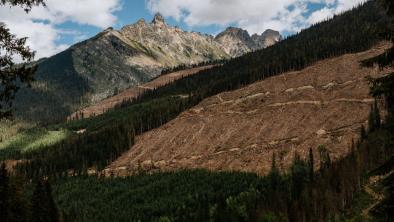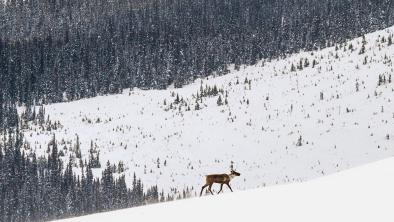Tiny krill vital to salmon stocks: scientist
The Nanaimo News Bulletin
By DARRELL BELLAART The Nanaimo News Bulletin
Feb 18 2006
Fishermen have watched with dismay as salmon stocks grow more scarce each year, but a Nanaimo scientist is on the verge of finding out why.
While others have looked at El Nino, the south Pacific weather system that crops up every few years, over-harvesting, or shifting oceanic currents, Ron Tanasichuk isn't convinced.
"It's not really getting into the biological basis of it," Tanasichuk says.
A research biologist at Nanaimo's Pacific Biological Station, his sharp, mathematical mind is always looking for proof.
"I see myself as a classic gumboot biologist. I like to go out and look at things and measure things."
He focuses his research on which fish are eating what, and carefully measuring any changes that happen over the years.
His approach is the offspring of a formula created by Bill Ricker, the late PBS scientist who was awarded the Order of Canada for his ground-breaking scientific discoveries.
Ricker showed how a glut of parents leads to fewer offspring.
"What I'm doing is building on Ricker's work by looking at fish when they're a little bit older," Tanasichuk said. "I look at the effect of food and other fish on the offspring, and as they get older."
On the West Coast of Vancouver Island, it all falls down to the lowly krill, a shrimp-like sea creature about the size of the end of your baby finger.
Ten times a year, for almost two decades, Tanasichuk has traveled to Barkley Sound to collect and measure krill, or euphausiids. He's particularly interested in the species Thysanoessa spinifera, or T. spin, as he affectionately calls them.
These creatures are as important to many fish as bread is to humans. They are the main staple in the diet of juvenile salmon, herring, hake, dogfish, sablefish, oolichan and some other Pacific Northwest fish.
"Really, it's the krill for the West Coast that make the world go round up here on the Continental Shelf along the west coast of Vancouver Island," Tanasichuk says.
Every month between March and November, and in January, he scoops up samples of the critters in "bongo" nets dropped off the Bamfield Marine Sciences Centre's research vessel Alta. They go at night, when the critters gently lift away from the ocean bottom, making them easier to collect.
He also meticulously measures the size of T. spin he finds in the stomachs of salmon, herring, hake and other fish. He wants to know exactly what they eat, and when.
The information he collects makes a convincing argument that euphausiid are directly linked to West Coast fish stocks.
He's now able to use the information to accurately predict the number of new, West Coast Vancouver Island herring spawners, and salmon returns up to three years in advance.
His research shows krill populations peak and fall throughout the year. As it turns out, fish migrations closely coincide with when the krill reach a certain size in the wild. Sockeye enter Barkley Sound in May. Coho migrate later, when the krill are larger.
"You can almost set your watch by them," Tanasichuk says.
Tanasichuk has learned, and proven, that a scarcity of krill during a salmon run can have devastating effects on the number of returning spawners in subsequent years. A similar effect is seen in herring stocks, which become smaller when food is scarce during key periods in their growth.
Tanasichuk has also found evidence that when hake are plentiful, they can eat herring, compounding the negative effects of a krill shortage.
"My most recent calculations show I can explain basically all the variation in production of new herring off the West Coast of Vancouver Island," Tanasichuk says.
"I think it's great. And I don't think I've seen anybody be able to do this kind of stuff."
His research is breaking new ground, but for every discovery, he finds new areas of research to explore. For example, the next obvious question is why the krill are disappearing.
Tanasichuk is pinning his hopes on a proposal to add what he calls the Bamfield node to the Neptune Project, a joint venture between the University of Victoria, the Centre for Earth and Ocean Sciences and several research agencies in the United States.
Scientists plan to create a web of fiber-optic cables to connect a series of underwater study "nodes" around the Juan de Fuca tectonic plate, gathering data from an area spanning 500,000 square kilometres.
Tanasichuk said for about $125,000 a year, scientists could monitor movements of nutrient-rich water from the deep sea to Barkley Sound.
"Once it gets here, we can see the phytoplankton bloom - we want to measure that because a lot of that will be krill food. It kind of works up the food chain. We'll sample the phytoplankton and see how that affects everything."
Tanasichuk, 52, plans to retire in a few short years, and he wonders who will continue the research. Every path of discovery leads him to new areas of research, and he considers the science too important to ignore.
He's reluctant to say what his research tells him about the near future of salmon stocks, but what he will say is hardly reassuring.
"I can tell you right now, it won't be good."
web.bcnewsgroup.com/portals-code/list.cgi?cat=23&paper=51&id=592661


